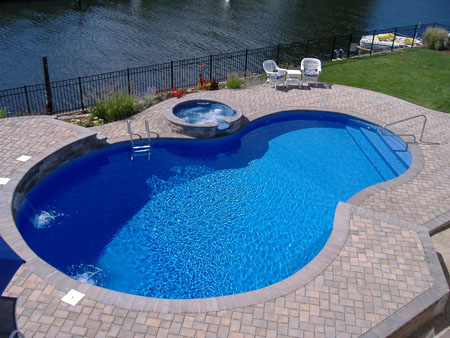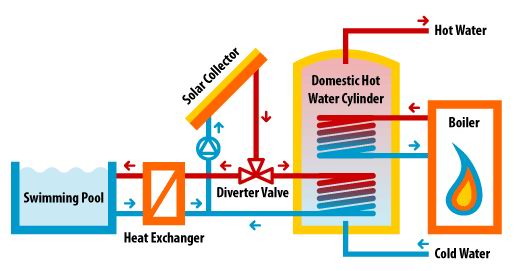Solar Water Pumping: A Practical Introduction
 If you need to supply water beyond the reach of power lines, then
solar power can solve the problem. Photovoltaic powered pumps provide
a welcome alternative to fuel-burning engines, windmills, and hand
pumps. Thousands of solar pumps are working throughout the world.
They produce best during sunny weather, when the need for water is
greatest.
If you need to supply water beyond the reach of power lines, then
solar power can solve the problem. Photovoltaic powered pumps provide
a welcome alternative to fuel-burning engines, windmills, and hand
pumps. Thousands of solar pumps are working throughout the world.
They produce best during sunny weather, when the need for water is
greatest.- swimming pools
- fountains or streams
- farm water (small pumps to carry water from nearby lakes or water holes for cattle)
- home pump
How It Works
 Photovoltaic (PV) modules (i.e. solar electric panels) produce
electricity from sunlight using silicon cells, with no moving parts.
They have been mass-produced since 1979. They are so reliable that
most manufacturers give a 20-year warranty, and a life expectancy
beyond 30 years. They work well in cold or hot weather.
Photovoltaic (PV) modules (i.e. solar electric panels) produce
electricity from sunlight using silicon cells, with no moving parts.
They have been mass-produced since 1979. They are so reliable that
most manufacturers give a 20-year warranty, and a life expectancy
beyond 30 years. They work well in cold or hot weather.
Solar water pumps are specially designed to utilize DC electric power from photovoltaic modules. The pumps must work during low light conditions, when power is reduced, without stalling or overheating. Low volume pumps use positive displacement (volumetric) mechanisms which seal water in cavities and force it upward. Lift capacity is maintained even while pumping slowly. These mechanisms include diaphragm, vane and piston pumps. These differ from a conventional centrifugal pump that needs to spin fast to work efficiently. Centrifugal pumps are used where higher volumes are required.
A surface pump is one that is mounted at ground level. Surface pumps work well when they draw water through suction less than 10 or 20 feet. A submersible pump is one that is lowered into the water. Most deep wells use submersible pumps.
A pump controller (current booster) is an electronic device used with most solar pumps. It acts like an automatic transmission, helping the pump to start and keeps it from stalling in weak sunlight.
A solar tracker may be used to tilt the PV array as the sun moves across the sky during the day. This can increase daily energy gain by as much as 55%. With more hours of peak sun, a smaller pump and power system may be used, thus reducing overall cost. Tracking works best in clear sunny weather. It is less effective in cloudy climates and on short winter days.
 Storage is important. Three to ten days' storage may be required,
depending on climate and water usage. Most systems use water storage
tanks for simplicity and economy. In other cases, batteries can be
added to the system. Electrical energy from the solar modules is stored
in the batteries so that the pump can run at non-sunny times. Add a
float switch to the system which can turn the pump off when the water
tank fills, to prevent overflow.
Storage is important. Three to ten days' storage may be required,
depending on climate and water usage. Most systems use water storage
tanks for simplicity and economy. In other cases, batteries can be
added to the system. Electrical energy from the solar modules is stored
in the batteries so that the pump can run at non-sunny times. Add a
float switch to the system which can turn the pump off when the water
tank fills, to prevent overflow.
Windmills, used to pump water in the "old" days, can still be seen on many horizons. More recently solar pumps have replaced windmills in water pumping applications. A small solar system turns out to be less expensive and much easier to install and maintain. The solar panels also provide a more consistent supply of water; and they can be installed in valleys and wooded areas where wind exposure is poor. A PV array may be placed some distance away from the pump itself; even several hundred feet (100 m) away. Learn more at: http://www.altestore.com/
- Power source (photovoltaic solar modules)
- Motor/pump (or motor/compressor) assembly
- Power controllers for matching the changing electrical output of the array to suit the motor/pump






